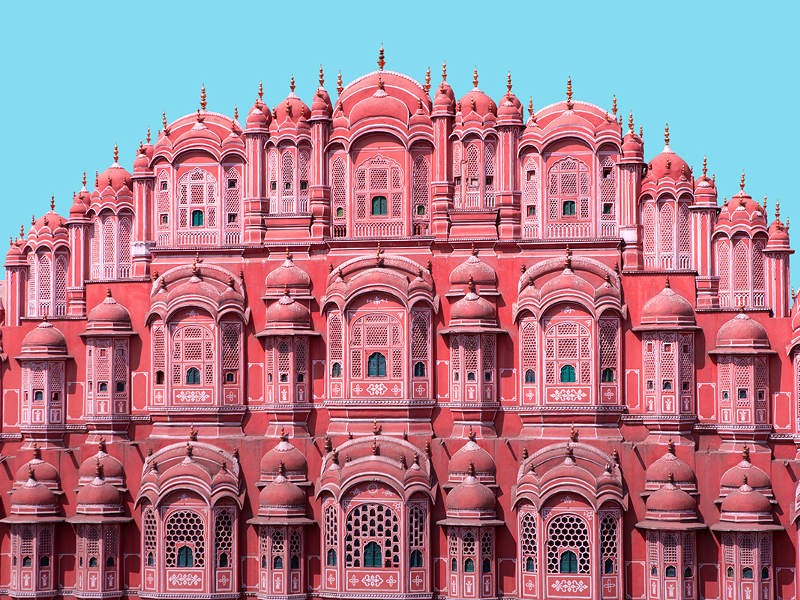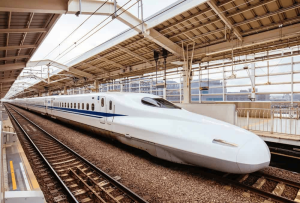Introduction
Among India’s many historically rich cities, Jaipur, the capital of Rajasthan, stands out with its distinct charm and color palette. Known globally as the Pink City, Jaipur captures the imagination of millions with its warm terracotta-hued buildings, majestic forts, intricate palaces, and a cultural heritage that reflects the grandeur of royal Rajasthan.
But have you ever wondered why Jaipur is called the Pink City? Was it merely a stylistic decision by the rulers of the past, or does it carry a deeper historical and symbolic meaning? The story behind this unique color identity is one that combines architectural vision, royal hospitality, and a fascinating blend of history and legends.
In this in-depth blog, we explore the real reason behind Jaipur’s rosy hue, the cultural symbolism of the color pink, the history of the city’s design, and how it continues to attract travelers from across the globe.
Also Read:- Ring Road Jaipur: Road Map | Toll | Plan | News – Housiey
Which Is the Pink City in the World?
When people ask which is the Pink City in the world, the answer comes without hesitation—Jaipur, India. It’s not just India’s Pink City but the world’s most famous one, celebrated for its uniform pink structures and old-world charm.
Unlike other cities that earned nicknames for specific attractions, Jaipur’s title is deeply integrated into its architectural DNA. From the bustling bazaars of Johari and Bapu to the grand Hawa Mahal and the City Palace, almost every corner of the old city gleams with pinkish tones that reflect both heritage and hospitality.
Why Jaipur Is Called Pink City – The Real Historical Reason

The reason why Jaipur is called Pink City lies in a fascinating royal event that took place in 1876. During that year, Prince Albert, the consort of Queen Victoria, planned a visit to India. The then ruler of Jaipur, Maharaja Sawai Ram Singh II, decided to welcome the Prince with a gesture that would stand out in history.
In Indian culture, pink symbolizes hospitality, warmth, and friendship. To honor the visiting dignitary, the Maharaja ordered the entire city to be painted in shades of terracotta pink—a decision that transformed Jaipur into an architectural marvel.
The color delighted the Prince and Queen Victoria, and since then, Jaipur has carried the nickname “The Pink City.” Later, in 1877, the Maharaja passed a law that required all buildings in the walled city to be painted in the same color, ensuring uniformity that remains protected to this day.
Why Jaipur Is Called Pink City for Class 4 Students (Simplified Explanation)
For younger readers or students learning why Jaipur is called Pink City class 4, the answer can be put simply:
When a British prince visited Jaipur, the king painted all the houses and palaces pink to show that his people were friendly and welcoming. Pink is the color of love and kindness, and that’s why Jaipur became famous as the Pink City.
Also Read:- Delhi & Jaipur Expressway: Route Map | Opening Date | Distance | News
The History of Jaipur’s Architecture and Planning

Jaipur is not just another historic city—it’s India’s first planned city, founded in 1727 by Maharaja Sawai Jai Singh II. The ruler was not only a warrior but also a mathematician and astronomer. He wanted his new capital to reflect both beauty and science.
Following the principles of Vastu Shastra and Shilpa Shastra, the city was designed with broad avenues, uniform facades, and symmetrical layouts. The walls that enclosed the old city were adorned with pink-colored plaster, giving Jaipur its distinct identity.
Today, this planning continues to inspire urban design worldwide, making Jaipur one of the best-preserved heritage cities in India.
Also Read:- Jewar Airport Connectivity Map: Yamuna Expressway | DME & Metro Plans
Jaipur Pink City in Which State?
A common question among travelers is, Jaipur Pink City in which state? The answer is Rajasthan, the largest state in India by area. Rajasthan is known for its desert landscapes, royal palaces, colorful festivals, and traditional handicrafts. Jaipur serves as its capital and is part of the Golden Triangle tourist circuit, along with Delhi and Agra.
The Symbolism Behind the Color Pink

The choice of pink was not accidental. In Rajasthani and Indian culture, pink symbolizes warmth, welcome, and joy. Maharaja Sawai Ram Singh II wanted to reflect these values through architecture, turning the city itself into a symbol of friendship and hospitality.
Even today, residents of the old city follow strict building codes that ensure the use of the same pink color tone, maintaining Jaipur’s timeless charm and identity.
Famous Landmarks That Make Jaipur the Pink City

The Pink City’s architectural beauty shines through its numerous landmarks, including:
- Hawa Mahal: The Palace of Winds, famous for its 953 latticed windows designed for royal women to observe street festivals unseen.
- City Palace: A blend of Rajput and Mughal architecture, still housing the royal family.
- Jantar Mantar: An astronomical observatory and UNESCO World Heritage Site.
- Amber Fort: A majestic fort with stunning hilltop views and intricate marble carvings.
- Albert Hall Museum: Built to commemorate Prince Albert’s visit, this museum is an architectural masterpiece.
Each of these structures embodies the city’s signature color, making Jaipur Pink City images among the most photographed in India.
Distances and Connectivity: Exploring the Pink City Easily

When visiting Jaipur, understanding local distances and routes helps tourists navigate easily.
Pink City Jaipur Distance
If you’re wondering about the Pink City Jaipur distance from key locations:
- From Delhi to Jaipur, it’s around 280 km (5–6 hours by road or 1 hour by flight).
- From Agra, it’s about 240 km (4–5 hours by road).
Jaipur Railway Station to Pink City Distance
The Jaipur Railway Station to Pink City distance is approximately 5 km, making it easily accessible by auto-rickshaw, cab, or metro.
Jaipur Railway Station to Hawa Mahal Distance
From Jaipur Railway Station to Hawa Mahal, the distance is about 6 km, typically taking 15–20 minutes by car, depending on traffic.
Jaipur Railway Station to Jantar Mantar Distance
The Jaipur Railway Station to Jantar Mantar distance is also around 6 km, as both are located in the heart of the old city area.
Jaipur Metro Route and Connectivity

Modern Jaipur is not just about its royal past; it’s also embracing progress through modern infrastructure like the Jaipur Metro. The Jaipur Metro route connects important parts of the city, including Mansarovar, Civil Lines, Chandpole, and the old city region.
The Jaipur Metro timetable is designed to offer convenience to daily commuters and tourists alike, with trains running at regular intervals from early morning to late evening.
The metro system beautifully complements the heritage areas, ensuring tourists can explore the Pink City with comfort and efficiency.
Legends and Myths Behind the Pink Color
While history credits Maharaja Sawai Ram Singh II for painting the city pink, legends suggest deeper meanings. Some say the pink hue was chosen to honor the goddess of prosperity and love. Others believe it was the Maharaja’s way of standing out among other princely states that showcased their power through architecture.
Regardless of the version, the outcome was the same—Jaipur became synonymous with vibrancy, warmth, and royal elegance.
Cultural Significance of the Pink Identity
Jaipur’s pink identity has become deeply tied to its cultural festivals, folk traditions, and tourism branding. From the Jaipur Literature Festival to Teej, Gangaur, and Holi, the city’s colorful celebrations perfectly align with its pink aesthetic.
The hue also influences Jaipur’s arts and crafts, with pink tones appearing in pottery, textiles, and jewelry, making them unique souvenirs for visitors.
Preservation of the Pink Heritage

To maintain Jaipur’s historical identity, the local government enforces regulations that preserve the pink façade of the old city. Every few years, public buildings are repainted in the approved terracotta shade before major festivals or tourist seasons.
This dedication to preservation helped Jaipur earn its spot as a UNESCO World Heritage City in 2019.
Conclusion
From royal symbolism to architectural marvels, Jaipur’s pink color is more than just paint—it’s a legacy of hospitality, culture, and unity. The city’s transformation during Prince Albert’s visit left behind an identity that continues to enchant millions.
Whether you explore the Hawa Mahal, take a stroll through Bapu Bazaar, or simply marvel at the Jaipur Pink City images online, you’ll find that every shade tells a story of warmth and grandeur.
For modern travelers, Jaipur beautifully balances heritage with progress—seen through initiatives like the Jaipur Metro, which makes exploring the Pink City even more convenient.
If you’re planning your visit, remember that Jaipur is not just a city—it’s an experience painted in pink.
Discover more about how the Jaipur Metro connects the royal city—read our detailed blog on “Jaipur Metro” exclusively on Housiey.
FAQs
Introduction
Among India’s many historically rich cities, Jaipur, the capital of Rajasthan, stands out with its distinct charm and color palette. Known globally as the Pink City, Jaipur captures the imagination of millions with its warm terracotta-hued buildings, majestic forts, intricate palaces, and a cultural heritage that reflects the grandeur of royal Rajasthan.
But have you ever wondered why Jaipur is called the Pink City? Was it merely a stylistic decision by the rulers of the past, or does it carry a deeper historical and symbolic meaning? The story behind this unique color identity is one that combines architectural vision, royal hospitality, and a fascinating blend of history and legends.
In this in-depth blog, we explore the real reason behind Jaipur’s rosy hue, the cultural symbolism of the color pink, the history of the city’s design, and how it continues to attract travelers from across the globe.
Also Read:- Ring Road Jaipur: Road Map | Toll | Plan | News – Housiey
Which Is the Pink City in the World?
When people ask which is the Pink City in the world, the answer comes without hesitation—Jaipur, India. It’s not just India’s Pink City but the world’s most famous one, celebrated for its uniform pink structures and old-world charm.
Unlike other cities that earned nicknames for specific attractions, Jaipur’s title is deeply integrated into its architectural DNA. From the bustling bazaars of Johari and Bapu to the grand Hawa Mahal and the City Palace, almost every corner of the old city gleams with pinkish tones that reflect both heritage and hospitality.
Why Jaipur Is Called Pink City – The Real Historical Reason

The reason why Jaipur is called Pink City lies in a fascinating royal event that took place in 1876. During that year, Prince Albert, the consort of Queen Victoria, planned a visit to India. The then ruler of Jaipur, Maharaja Sawai Ram Singh II, decided to welcome the Prince with a gesture that would stand out in history.
In Indian culture, pink symbolizes hospitality, warmth, and friendship. To honor the visiting dignitary, the Maharaja ordered the entire city to be painted in shades of terracotta pink—a decision that transformed Jaipur into an architectural marvel.
The color delighted the Prince and Queen Victoria, and since then, Jaipur has carried the nickname “The Pink City.” Later, in 1877, the Maharaja passed a law that required all buildings in the walled city to be painted in the same color, ensuring uniformity that remains protected to this day.
Why Jaipur Is Called Pink City for Class 4 Students (Simplified Explanation)
For younger readers or students learning why Jaipur is called Pink City class 4, the answer can be put simply:
When a British prince visited Jaipur, the king painted all the houses and palaces pink to show that his people were friendly and welcoming. Pink is the color of love and kindness, and that’s why Jaipur became famous as the Pink City.
Also Read:- Delhi & Jaipur Expressway: Route Map | Opening Date | Distance | News
The History of Jaipur’s Architecture and Planning

Jaipur is not just another historic city—it’s India’s first planned city, founded in 1727 by Maharaja Sawai Jai Singh II. The ruler was not only a warrior but also a mathematician and astronomer. He wanted his new capital to reflect both beauty and science.
Following the principles of Vastu Shastra and Shilpa Shastra, the city was designed with broad avenues, uniform facades, and symmetrical layouts. The walls that enclosed the old city were adorned with pink-colored plaster, giving Jaipur its distinct identity.
Today, this planning continues to inspire urban design worldwide, making Jaipur one of the best-preserved heritage cities in India.
Also Read:- Jewar Airport Connectivity Map: Yamuna Expressway | DME & Metro Plans
Jaipur Pink City in Which State?
A common question among travelers is, Jaipur Pink City in which state? The answer is Rajasthan, the largest state in India by area. Rajasthan is known for its desert landscapes, royal palaces, colorful festivals, and traditional handicrafts. Jaipur serves as its capital and is part of the Golden Triangle tourist circuit, along with Delhi and Agra.
The Symbolism Behind the Color Pink

The choice of pink was not accidental. In Rajasthani and Indian culture, pink symbolizes warmth, welcome, and joy. Maharaja Sawai Ram Singh II wanted to reflect these values through architecture, turning the city itself into a symbol of friendship and hospitality.
Even today, residents of the old city follow strict building codes that ensure the use of the same pink color tone, maintaining Jaipur’s timeless charm and identity.
Famous Landmarks That Make Jaipur the Pink City

The Pink City’s architectural beauty shines through its numerous landmarks, including:
- Hawa Mahal: The Palace of Winds, famous for its 953 latticed windows designed for royal women to observe street festivals unseen.
- City Palace: A blend of Rajput and Mughal architecture, still housing the royal family.
- Jantar Mantar: An astronomical observatory and UNESCO World Heritage Site.
- Amber Fort: A majestic fort with stunning hilltop views and intricate marble carvings.
- Albert Hall Museum: Built to commemorate Prince Albert’s visit, this museum is an architectural masterpiece.
Each of these structures embodies the city’s signature color, making Jaipur Pink City images among the most photographed in India.
Distances and Connectivity: Exploring the Pink City Easily

When visiting Jaipur, understanding local distances and routes helps tourists navigate easily.
Pink City Jaipur Distance
If you’re wondering about the Pink City Jaipur distance from key locations:
- From Delhi to Jaipur, it’s around 280 km (5–6 hours by road or 1 hour by flight).
- From Agra, it’s about 240 km (4–5 hours by road).
Jaipur Railway Station to Pink City Distance
The Jaipur Railway Station to Pink City distance is approximately 5 km, making it easily accessible by auto-rickshaw, cab, or metro.
Jaipur Railway Station to Hawa Mahal Distance
From Jaipur Railway Station to Hawa Mahal, the distance is about 6 km, typically taking 15–20 minutes by car, depending on traffic.
Jaipur Railway Station to Jantar Mantar Distance
The Jaipur Railway Station to Jantar Mantar distance is also around 6 km, as both are located in the heart of the old city area.
Jaipur Metro Route and Connectivity

Modern Jaipur is not just about its royal past; it’s also embracing progress through modern infrastructure like the Jaipur Metro. The Jaipur Metro route connects important parts of the city, including Mansarovar, Civil Lines, Chandpole, and the old city region.
The Jaipur Metro timetable is designed to offer convenience to daily commuters and tourists alike, with trains running at regular intervals from early morning to late evening.
The metro system beautifully complements the heritage areas, ensuring tourists can explore the Pink City with comfort and efficiency.
Legends and Myths Behind the Pink Color
While history credits Maharaja Sawai Ram Singh II for painting the city pink, legends suggest deeper meanings. Some say the pink hue was chosen to honor the goddess of prosperity and love. Others believe it was the Maharaja’s way of standing out among other princely states that showcased their power through architecture.
Regardless of the version, the outcome was the same—Jaipur became synonymous with vibrancy, warmth, and royal elegance.
Cultural Significance of the Pink Identity
Jaipur’s pink identity has become deeply tied to its cultural festivals, folk traditions, and tourism branding. From the Jaipur Literature Festival to Teej, Gangaur, and Holi, the city’s colorful celebrations perfectly align with its pink aesthetic.
The hue also influences Jaipur’s arts and crafts, with pink tones appearing in pottery, textiles, and jewelry, making them unique souvenirs for visitors.
Preservation of the Pink Heritage

To maintain Jaipur’s historical identity, the local government enforces regulations that preserve the pink façade of the old city. Every few years, public buildings are repainted in the approved terracotta shade before major festivals or tourist seasons.
This dedication to preservation helped Jaipur earn its spot as a UNESCO World Heritage City in 2019.
Conclusion
From royal symbolism to architectural marvels, Jaipur’s pink color is more than just paint—it’s a legacy of hospitality, culture, and unity. The city’s transformation during Prince Albert’s visit left behind an identity that continues to enchant millions.
Whether you explore the Hawa Mahal, take a stroll through Bapu Bazaar, or simply marvel at the Jaipur Pink City images online, you’ll find that every shade tells a story of warmth and grandeur.
For modern travelers, Jaipur beautifully balances heritage with progress—seen through initiatives like the Jaipur Metro, which makes exploring the Pink City even more convenient.
If you’re planning your visit, remember that Jaipur is not just a city—it’s an experience painted in pink.
Discover more about how the Jaipur Metro connects the royal city—read our detailed blog on “Jaipur Metro” exclusively on Housiey.
FAQs














